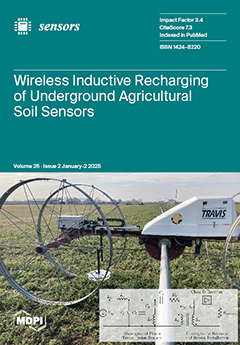Introduction: Gait analysis is a vital tool in the assessment of human movement and has been widely used in clinical settings to identify potential abnormalities in individuals. However, there is a lack of consensus on the normative values for gait metrics in large
[...] Read more.
Introduction: Gait analysis is a vital tool in the assessment of human movement and has been widely used in clinical settings to identify potential abnormalities in individuals. However, there is a lack of consensus on the normative values for gait metrics in large populations. The primary objective of this study is to establish a normative database of spatiotemporal gait metrics across various age groups, contributing to a broader understanding of human gait dynamics. By doing so, we aim to enhance the clinical utility of gait analysis in diagnosing and managing health conditions. Methods: We conducted an observational case–control study involving 313 healthy participants. The MetaMotionC IMU by Mbientlab Inc., equipped with a triaxial accelerometer, gyroscope, and magnetometer, was used to capture gait data. The IMU was placed at the sternal angle of each participant to ensure optimal data capture during a 50 m walk along a flat, unobstructed pathway. Data were collected through a Bluetooth connection to a smartphone running a custom-developed application and subsequently analysed using IMUGaitPY, a specialised version of the GaitPY Python package. Results: The data showed that gait speeds decrease with ageing for males and females. The fastest gait speed is observed in the 41–50 age group at
. Males consistently exhibit faster gait speeds than females across all age groups. Step length and cadence do not have clear trends with ageing. Gait speed and step length increase consistently with height, with the tallest group (191–200 cm) walking at an average speed of
, with an average step length of
. Cadence, however, decreases with increasing height, with the tallest group taking
on average. Conclusions: This study has established a comprehensive normative database for the spatiotemporal gait metrics of gait speed, step length, and cadence, highlighting the complexities of gait dynamics across age and sex groups and the influence of height. Our findings offer valuable reference points for clinicians to distinguish between healthy and pathological gait patterns, facilitating early detection and intervention for gait-related disorders. Moreover, this database enhances the clinical utility of gait analysis, supporting more objective diagnoses and assessments of therapeutic interventions. The normative database provides a valuable reference future research and clinical practice. It enables a more nuanced understanding of how gait evolves with age, gender, and physical stature, thus informing the development of targeted interventions to maintain mobility and prevent falls in older adults. Despite potential selection bias and the cross-sectional nature of the study, the insights gained provide a solid foundation for further longitudinal studies and diverse sampling to validate and expand upon these findings.
Full article






